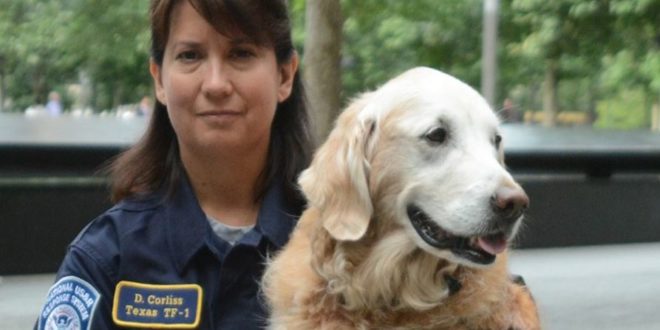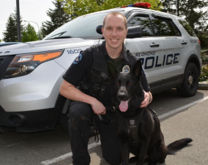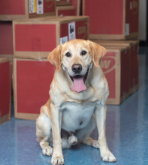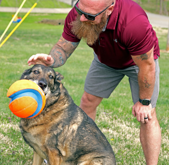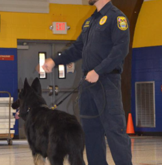Died – 6/7/16
Handler – Denise Corliss
Last known 9/11 search and rescue dog laid to rest
When it was time to say goodbye, she was given a hero’s farewell. Firefighters and rescue workers lined the sidewalk as her body, draped in an American flag, was carried out. Tears streaked down some faces. Bretagne, believed to be the last surviving 9/11 Ground Zero search dog, was euthanized Monday. The golden retriever was 16. Old age had slowed her down, and it was time to put her to sleep. So, the firefighters at the Cy-Fair Fire Department in Harris County, Texas, lined the path up to the Fairfield Animal Hospital, as her owner, Denise Corliss, walked her in to be put to sleep. Back in 2001, Bretagne (pronounced, “Brittany”) and Corliss were fresh graduates of Disaster City when they were deployed to New York shortly after the World Trade Center attacks. Corliss joined hundreds of other search and rescue teams sent from around the world to find survivors at Ground Zero, working 12 hours a day for two weeks straight. We know now there were very few survivors found in the rubble of the twin towers, and Bretagne, like so many other searchers, worked hard — only to find none. But Corliss discovered something unexpected: rescuers and firefighters would approach Bretagne and pet her. Soon they’d be sharing their personal stories with Corliss, describing the missing friends, loved ones and colleagues they were searching for. Bretagne had become a kind of therapy dog. “Dogs can be so comforting, so it makes sense to me now,” she says. “I just didn’t anticipate that, then.” 9/11 was only the first of many national disasters that called Bretagne and Corliss into action. Deployments followed for Hurricanes Katrina, Rita and other storms. Once Corliss watched Bretagne risk her own safety when the dog found herself standing on the end of a dangling staircase.”She walked to the edge of it and she stopped — turned — and she came back down,” Corliss recalled to CNN in 2014. “She did exactly what she was supposed to do, but it scared me a bit.” Despite all that training, Corliss admits “there were still times when I held my breath and said, ‘I hope she does this right. I hope she’s OK.’ ” It’s no coincidence that search and rescue dogs such as Bretagne succeed while working under such dangerous conditions. From the time they’re puppies, dogs must survive a rigid screening process before they can do this kind of work. When Corliss spotted Bretagne, she had a feeling this dog might be right. The puppy was pushy.Sharing a plastic kennel with eight other puppies, Bretagne buffaloed her way through the pack from back to front, to greet Corliss. “That kind of pushy behavior helped her be the persistent don’t-give-up-style of working dog that I needed later,” says Corliss. Bretagne left Texas Task Force 1 in 2009 to focus on her work as a local fire department search and rescue dog. Then after a couple more years, it was time for her to retire altogether. But that didn’t mean the end of Bretagne’s public service. In her later years, Bretagne spent time once a week teaching kids how to read. Really. She visited elementary school classrooms, where children, who “may be intimidated or uncomfortable reading out loud to their classmates, have an opportunity to develop reading skills by reading to her,” Corliss said.
